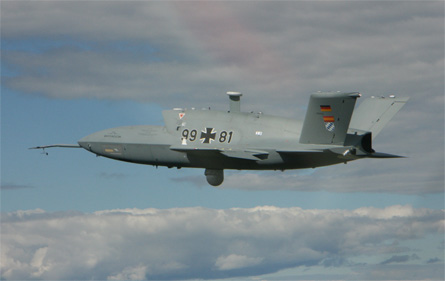EADS Cassidian has confirmed plans to launch a new flight-test campaign with its Barracuda unmanned combat air vehicle technology demonstrator later this year, but declined to detail its objectives for the activity.
To be staged at Goose Bay, Canada "this summer", the flights will build on work performed at the same site in July 2010, when Cassidian's lone Barracuda air vehicle took part in trials of sense-and-avoid equipment.
The earlier programme involved equipping the Barracuda with a traffic collision avoidance system and transponder to support deconfliction trials also involving a manned chase aircraft. This payload will eventually be expanded to include a radar and optical sensors, said Joost van Tooren, the company's head of flight guidance. This combination will be required to allow operators to gain permission to routinely fly unmanned systems in non-segregated airspace.
 |
|---|
© Cassidian |
"We are continuing to work on maturing technologies and on more demonstrations," van Tooren said, without detailing the contents of the forthcoming test programme.
Meanwhile, Cassidian has also reported strong early progress with a research programme intended to develop next-generation technologies for unmanned air systems.
Named Sagitta, and also involving German academic institutions and PhD students, the programme was launched last year and will run until 2014. Based on the use of a common air vehicle design, study aspects include the use of new materials and embedded sensors, miniaturisation and morphing designs, plus adaptive control techniques. It also includes steps to increase the autonomy of the aircraft and its sensor payload, said Cassidian head of technology and research Aimo Bülte.
"We can already see the interaction is very fruitful," Bülte said at EADS's Newport facility in south Wales on 29 February. "We are open to ideas that wouldn't normally get into the [design] system." However, he added: "We are very far away from a product."
Cassidian has identified UAVs as being one of its major product focus areas, said Bülte, who noted its development work also draws on flight-control technologies and other advances developed for the Eurofighter Typhoon.
Source: Flight International
















